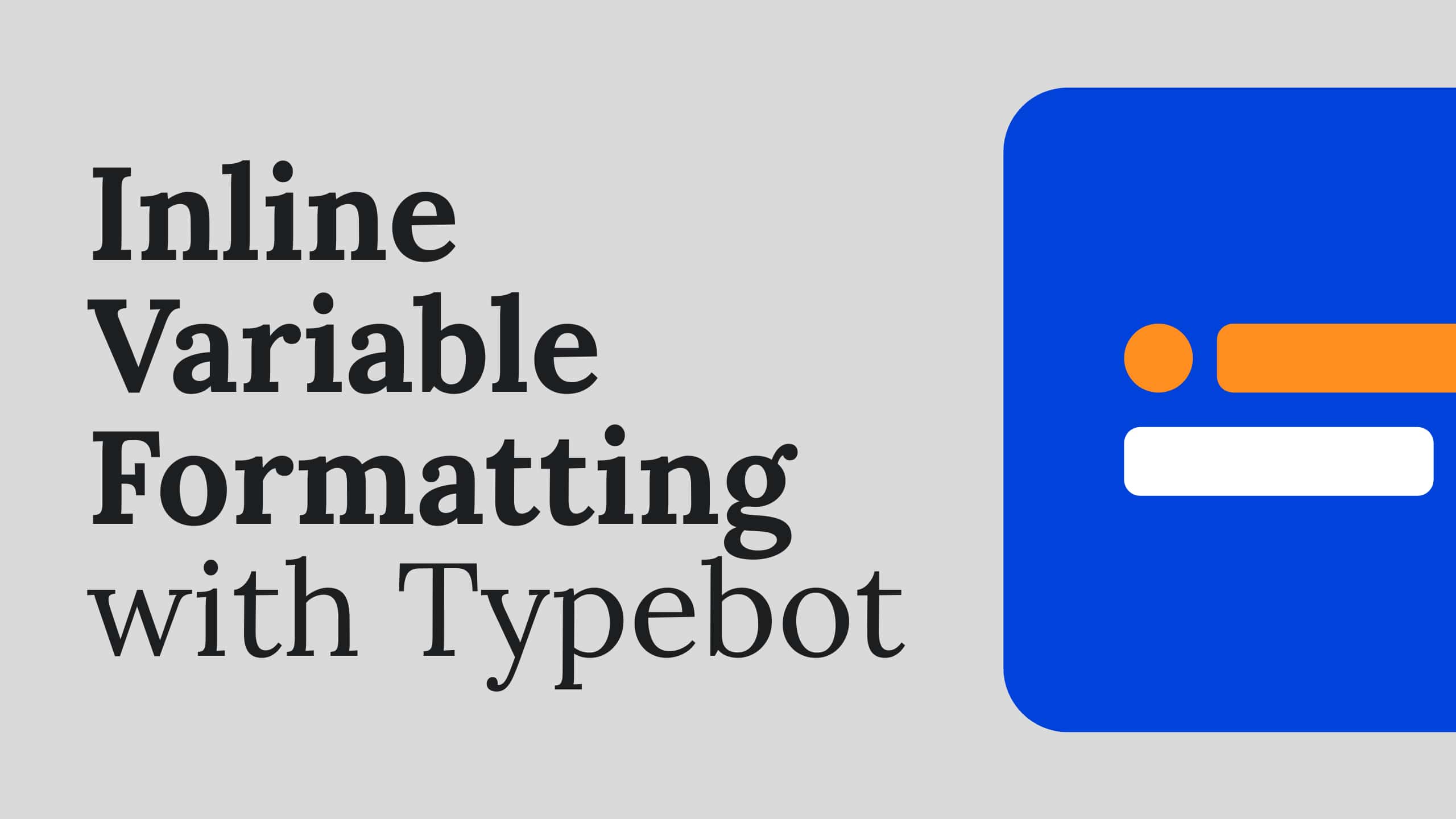Links
- Typebot Template: Inline Variable Formatting
- Typebot docs: Inline Variable Formatting
Video
Introduction to inline variable formatting
Inline variable formatting is a powerful feature that allows users to manipulate or format text bubbles in TypeBot using JavaScript. It provides a way to create fallback solutions within chatbot flows, ensuring a seamless user experience even when variables are left empty or undefined. In this article, we will explore this new feature in TypeBot, its notation, and various use cases where inline variable formatting can be applied.
Definition of inline variable formatting
Inline variable formatting in TypeBot refers to the ability to format text bubbles using JavaScript code. By incorporating JavaScript expressions within the text, users can manipulate the output based on the condition of a variable. This feature provides the flexibility to create dynamic and personalized responses within chatbot flows.
Fallback solutions in chatbot flows
One of the key applications of inline variable formatting is the creation of fallback solutions in chatbot flows. Often, when a user does not provide input for a variable or when a value is not passed for a variable, a blank space may appear in the chatbot conversation. This can lead to awkward user experiences. By using inline variable formatting techniques, users can create fallback solutions to handle these situations gracefully.
Introduction to notation used in TypeBot
To implement inline variable formatting in TypeBot, a specific notation is used. Users are required to include the equal sign before the curly braces enclosing the JavaScript code. This ensures that the code within the curly braces is executed when the chatbot encounters the variable.
{{={{name}} ? {{name}} : "there"=}}
Identification of conflict in example code
In a practical example, one might come across conflicts due to undefined variables. In such cases, the JavaScript code fails to execute, resulting in unexpected outcomes. It is crucial to define the variables properly to avoid such conflicts and ensure smooth execution of the code.
Creation of the variable to resolve conflict
To resolve conflicts arising from undefined variables, it is essential to define the variables before using them. By properly defining the variables, TypeBot can recognize them and execute the associated JavaScript code seamlessly.
Description of if statement as a ternary operator in JavaScript
Within the inline variable formatting code, an if statement is expressed as a ternary operator. This shorthand version of an if statement allows users to specify a condition and execute different code blocks based on whether the condition evaluates to true or false.
Explanation of how the condition determines the value brought by the code
The condition in the inline variable formatting code is set to the variable name. The condition determines whether the code brings in the value associated with the variable or executes an alternative code block. If the variable is undefined, the condition is evaluated as false, and the fallback code is executed. Conversely, if the variable has a value, the condition is true, and the respective value is displayed.
Illustration of creating a fallback solution in the code
To illustrate the concept of fallback solutions, let’s consider an email newsletter example. In a personalized email, the sender might include a greeting like “Hi [name],” where [name] represents a variable that can hold the recipient’s name. However, if the recipient’s name is not available, it is important to have a fallback solution to avoid awkward experiences. By using inline variable formatting, users can create a fallback solution that replaces the empty name variable with a more generic term like “friend.”
Execution of the code to demonstrate the output
With the code properly defined and the fallback solution created, it is time to execute the code and observe the output. By running the code within TypeBot, users can experience firsthand how the inline variable formatting techniques bring the desired output. Whether it is displaying a personalized greeting or a fallback message, the execution of the code showcases the power and versatility of inline variable formatting.
Use cases for inline variable formatting
Personalization in email newsletters as an example
One prominent use case for inline variable formatting is in email newsletters. Many newsletters include personalized content based on the recipient’s name. By using inline variable formattin in Typebot, your bots can dynamically adapt the content and replace any missing name variables with alternative terms like “friend” or “valued reader.” This ensures that even when the recipient’s name is not available, your bot maintains a personalized touch.
Importance of avoiding awkward experiences
Creating a seamless user experience is crucial in any chatbot or automation interaction. Awkward experiences, such as displaying blank spaces or undefined variables, can be off-putting for users. Inline variable formatting offers a solution to overcome these awkward experiences by providing fallback solutions that ensure consistent and engaging interactions.
